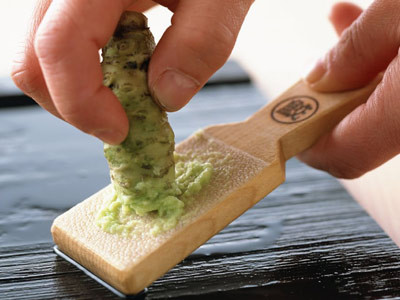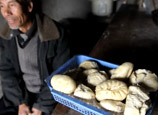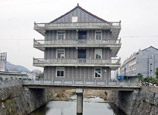
 |
| (File photo) |
Tempura tend be lighter than croquettes and there's a greater emphasis on the original flavor of the major ingredient, which might be shrimp, fish, vegetable or mushroom. Recently, I paired a Reisling from the Eden Valley in Australia with tempura and the combination was inspiring as the ample acidity of the wine accentuated the flavor and texture of each ingredient while cleansing the mouth of any sense of greasiness.
Japanese curry tends to be sweeter than other styles of curry and therefore is best enjoyed with a ripe and fruity wine to mirror the sensations of sweetness or a dry wine to offset them.
With the popular deep-fried pork chop in curry sauce served with white rice, a fruity southern Rhone Grenache red provides all the ripe fruit you need along with a slightly zesty spiciness that adds excitement to the dish.
A teppanyaki meal is tailor-made for a structured red wine. You may start with a full-bodied white wine to pair with the grilled seafood and now popular pan-fried goose liver. But the main event of any teppanyaki meal is the well-marbled beef. Here we need a stylish red with plenty of tannins to cut through the fat while emphasizing the beefy flavors. Tannic reds from St Estephe in Bordeaux are ideal.
How about going local when you enjoy Japanese cuisine? You may be surprised to know that Japan produces its own wines. Legends claim that winemaking dates back to the early 8th century, but the earliest documented evidence of wine making and consumption is from the 16th century when Jesuit missionaries from Portugal brought wines and vines to the island. Though still very small in terms of scale and international recognition, there are some increasingly interesting Japanese wines.
The most acclaimed Japanese wines are made with the Konshu variety in Katsunama Prefecture in the foothills of Mount Fuji. The grape produces pale-colored pink or lavender colored wines with excellent acidity. The delicate and fresh qualities of Konshu wines make them naturals with many Japanese dishes. Konshu producers with good reputations include Katsunuma-Jozo Winery, Magrez-Aruga, Alps Wines, Kai Winery and Shizen.
But the Konshu variety isn't the only new star. The island of Hokkaido is also producing some exciting wines. In one of the most northern wine regions in the world, small wineries are making increasingly good Pinot Noir red wines. Can Hokkaido emulate Central Otago in New Zealand and make world-class Pinots? The challenges and benefits of making wines in these two extreme climates do offer some intriguing parallels.

















 Going back home: A standing journey
Going back home: A standing journey


![]()
